Key takeaways
- Skinwalker stories blend cultural fears and natural connections, reflecting deep-rooted human experiences with the unknown.
- The genre of paranormal infotainment fosters community engagement, sparking conversations about shared mysteries and personal interpretations.
- Documenting personal experiences during investigations helps transform fleeting moments into tangible narratives that resonate emotionally.
- Analyzing collected evidence reveals patterns and sensations that often carry more weight than physical proof, emphasizing the power of unexplained experiences.
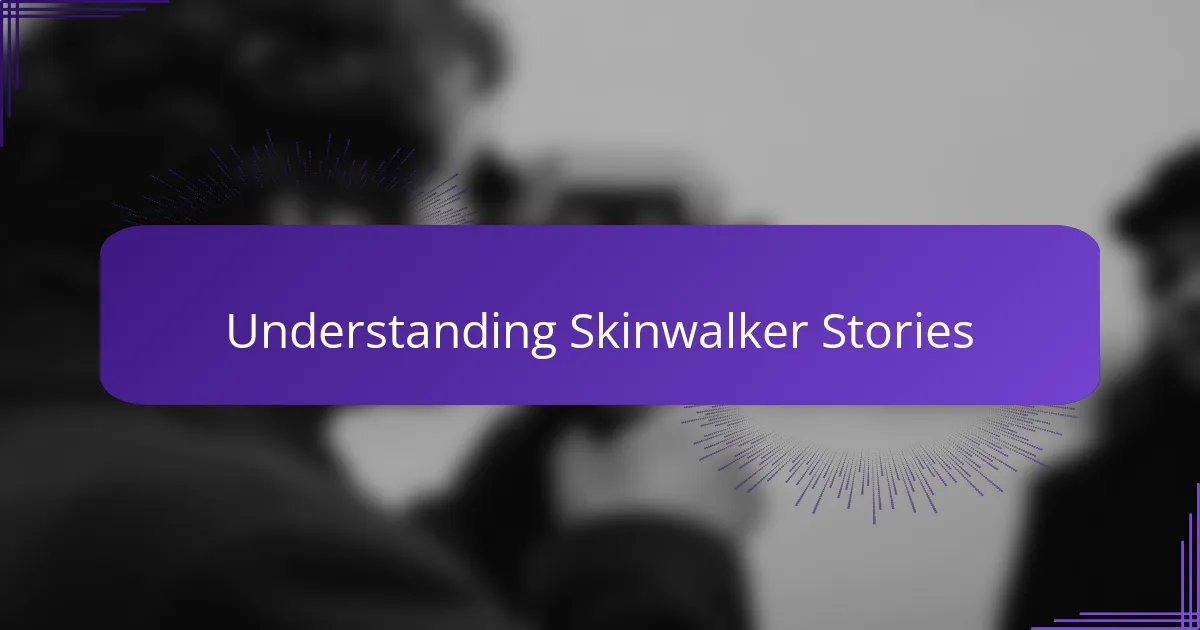
Understanding Skinwalker Stories
Skinwalker stories have always intrigued me because they blend fear with fascination. These tales, deeply rooted in Native American folklore, describe beings that can shapeshift into animals, often evoking a sense of unease that lingers long after you hear them. Have you ever wondered what it feels like to stand on the edge of the unknown, where reality and myth blur?
What struck me most during my investigation was how these stories reflect cultural fears and warnings. They’re not just spooky anecdotes; they carry lessons wrapped in mystery. When locals speak about Skinwalkers, there’s a mix of reverence and dread, as if acknowledging something powerful yet incomprehensible.
In trying to understand these stories, I asked myself: are Skinwalkers just legends, or do they reveal something deeper about human nature and the wilderness around us? This question kept me thinking, because beneath the eerie details lies a profound connection between humans and the natural world—one that’s as old as time itself.
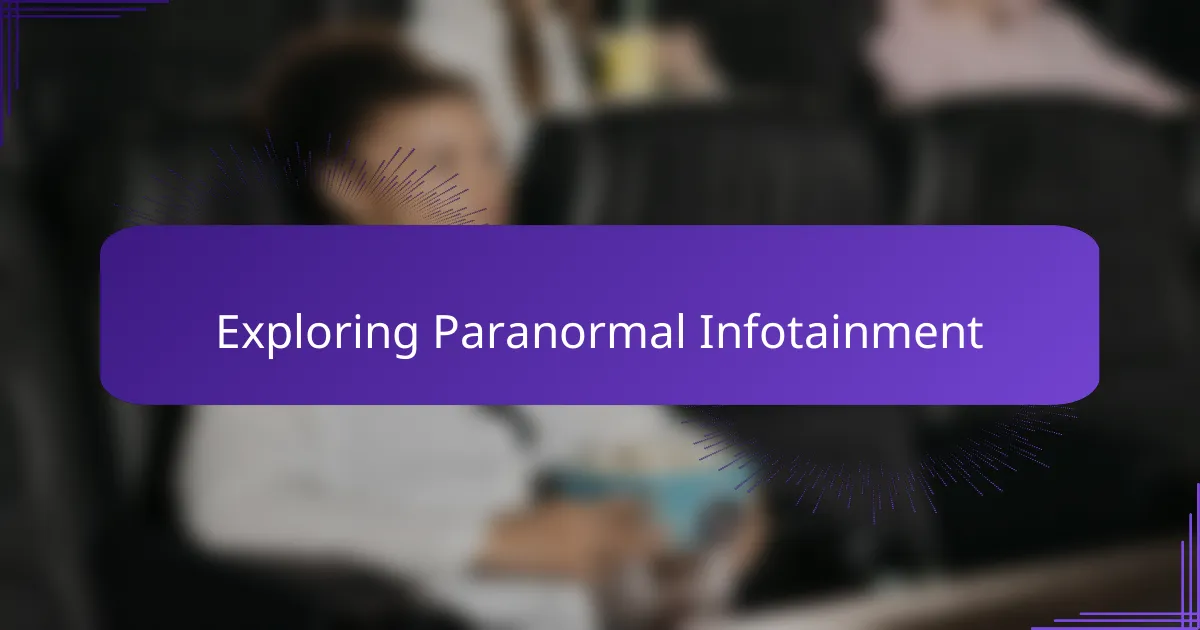
Exploring Paranormal Infotainment
Diving into paranormal infotainment felt like stepping into a world where curiosity meets the unexplained. I remember feeling a mix of excitement and skepticism, wondering how much of what we see is crafted for entertainment and how much taps into genuine mystery. Doesn’t that blur between fact and fiction make the stories even more compelling?
As I explored shows and documentaries, I noticed how paranormal infotainment often engages our deepest fears and fascinations simultaneously. It’s like a carefully woven tapestry of suspense and wonder that invites us to question what’s possible beyond the everyday. Have you ever caught yourself wanting to believe, even just for a moment?
What captivated me most was how this genre connects people, sparking conversations that go beyond the screen. It’s not just about ghost stories or legends; it’s about a shared human experience, a collective search for meaning in the strange and unexplained. That personal connection is why I keep coming back to these stories.
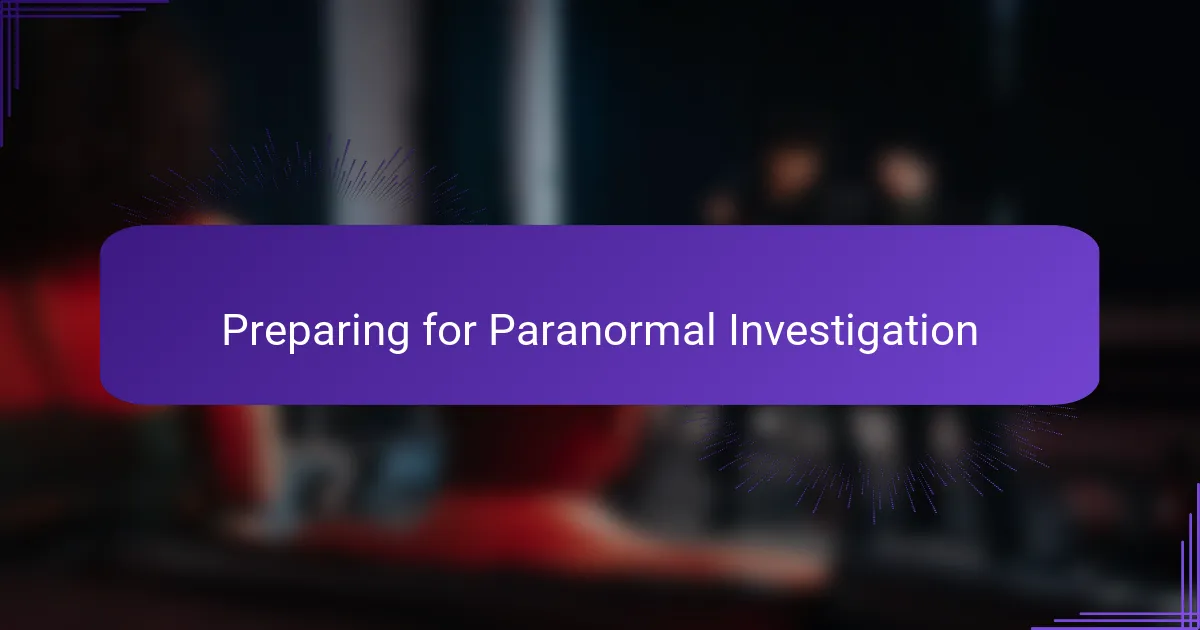
Preparing for Paranormal Investigation
Preparing for a paranormal investigation like this meant more than just packing a bag—it required a mindset ready for uncertainty. I made sure to research every detail about the location, the history, and the people who knew the stories firsthand. Have you ever felt that mix of anticipation and nervousness right before stepping into something truly unknown?
Equipment was another critical piece of the puzzle. I wasn’t just bringing gadgets to capture strange sounds or images; I wanted tools that could help me remain grounded and focused. For me, having a reliable flashlight and a notebook felt like essentials—not just for documentation but as anchors in the dark silence.
Mentally, I found the preparation to be as intense as the physical. I asked myself: Am I ready to face whatever might come without letting fear take over? It’s a question that lingered every time I packed my gear and headed out, reminding me that being open yet cautious is the key to any paranormal investigation.
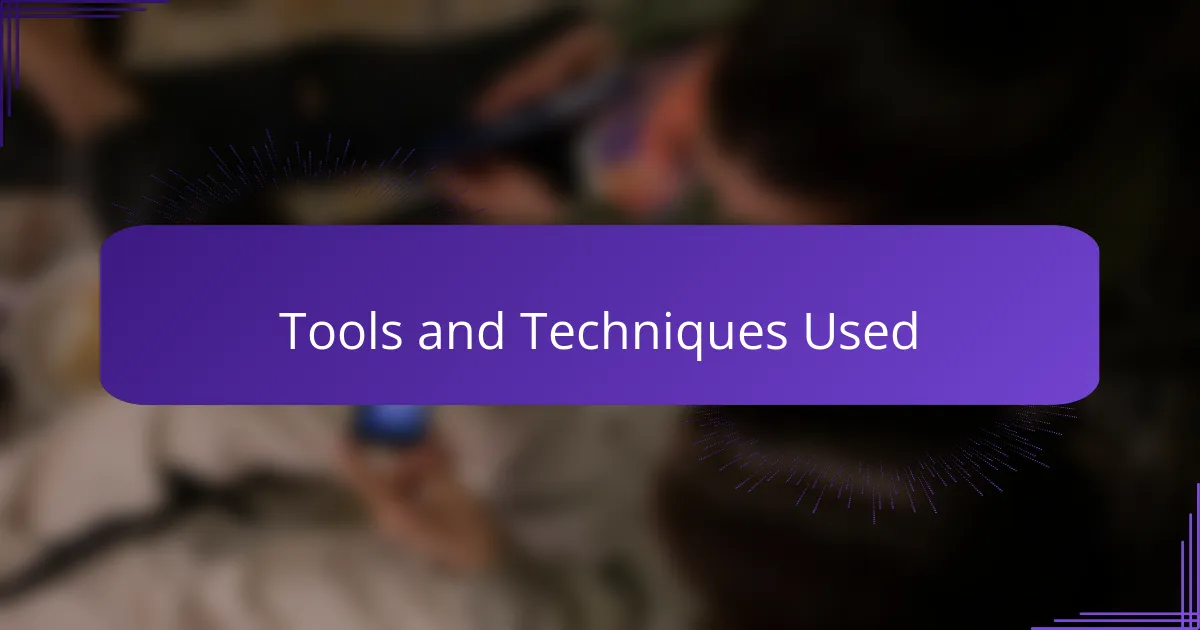
Tools and Techniques Used
One tool I found indispensable was an EVP recorder—designed to capture electronic voice phenomena. I kept asking myself, could subtle whispers or unexplained sounds hold clues to the Skinwalker presence? Listening back to the recordings, I was often surprised by faint noises that seemed almost too eerie to be coincidence.
Alongside the tech, I relied on traditional methods like detailed note-taking and sketching the environment. Writing down impressions in the moment helped me stay connected to my experience rather than getting lost in the equipment. Have you ever noticed how putting pen to paper sharpens your focus in strange or unsettling situations?
Night vision goggles were another game-changer during my late-night excursions. They allowed me to see movement or shapes without the harsh interference of a flashlight’s beam. I remember how surreal it felt peering into the darkness, sensing something just beyond sight—a reminder that sometimes, tools extend your perception, but don’t replace your intuition.

Documenting Personal Experiences
Documenting personal experiences became the heart of my investigation. Each encounter, no matter how brief or subtle, was like a piece of a puzzle that demanded careful attention. I often asked myself: How do I capture the invisible—those fleeting moments that slip through logic and leave only a chill behind?
I kept a journal close, scribbling details the very moment I felt something unusual—a sudden silence, a glimpse of movement, or a shift in atmosphere. Writing these down helped me process the experience, turning raw emotions and fleeting impressions into something more tangible. Have you ever tried to put a strange feeling into words and found it both frustrating and strangely revealing?
What surprised me most was how personal these moments became. They weren’t just data for an investigation; they felt like fragments of a story whispered directly to me. In those quiet recordings and hurried notes, I found a connection that went beyond skepticism—a reminder that sometimes, the most important evidence is what you feel in your bones.

Analyzing Evidence Collected
Going through the evidence I collected, I found myself caught between skepticism and a strange sense of awe. Some photos showed odd shadows that didn’t quite match the surroundings, and a few audio clips had faint noises that sent chills down my spine. Have you ever listened to a whisper that feels both familiar and utterly alien at the same time?
Analyzing the notes I took during the investigation was a revealing exercise. I noticed patterns—like sudden drops in temperature or moments when animals fell eerily silent—that kept repeating. It made me wonder if these subtle signs are nature’s way of hinting at something unseen, or just tricks our minds play when we want to believe.
But what really struck me was how the intangible parts of the evidence—the feelings, the atmosphere, the suspicions—often carried more weight than any physical proof. It’s like the Skinwalker stories exist in that delicate space where logic meets mystery, and maybe that’s where their true power lies. Have you ever experienced something that defies explanation, yet feels undeniably real?
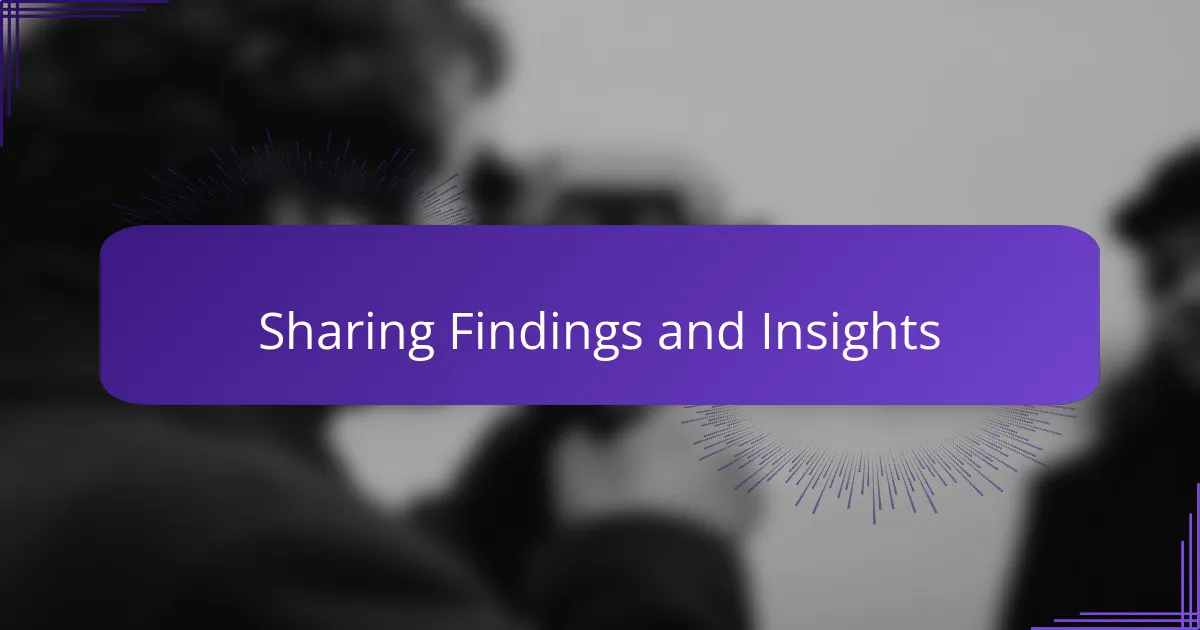
Sharing Findings and Insights
Sharing my findings felt like piecing together a puzzle that’s never quite complete. As I reviewed recordings and notes, I noticed details that seemed insignificant at first slowly taking shape into a narrative that was both haunting and oddly captivating. Isn’t it fascinating how the smallest clues can open doors to the deepest mysteries?
I also found that discussing these insights with others brought new perspectives I hadn’t considered. When I shared the patterns I observed—like the sudden silences in nature or fleeting shadowy figures—listeners reacted with a mix of skepticism and wonder, which reminded me how these stories live in that delicate balance between belief and doubt. Have you ever seen how a fresh set of eyes can change the way you understand something?
What stayed with me most was realizing that the value of my investigation wasn’t just in proving or debunking Skinwalker stories. It was in embracing the unknown and the emotions it stirred—curiosity, fear, respect—and sharing that experience with others eager to explore the shadows alongside me. After all, isn’t that journey part of what makes paranormal infotainment so compelling?